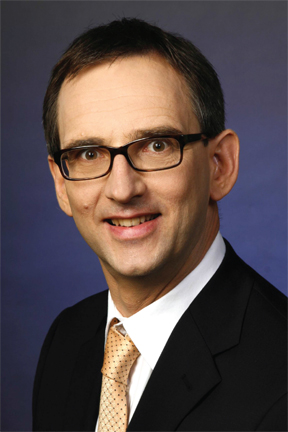
The thermoelectric energy harvester is powered by the flow of entropy from high to low temperature through the all solid-state device with no moving part. The energy, which is released in this process, is partly loaded on electric charge, which then flows from low to high electric potential. In nutshell, it is entropy that flows downhill and electric charge is pumped uphill. Obviously, entropy, which is often not the focus of consideration accounts for a lot. Therefore, the special issue starts with highlighting the direct entropic approach by Fuchs, which has been presented in the journal recently. Feldhoff shows that the widely accepted laborius treatment by the so-called thermodynamics of irreversible processes leads to the same transport equations as the direct entropic approach by Fuchs does. A thermoelectric tensor has been identified that contains all relevant material parameters and allows to easily identify the figure of merit of a thermoelectric material. Regardless of the simple view on the working principle, the realisation of a thermoelectric generator with good performance still requires a combination of chemistry, physics, materials science and engineering in experiment and theory.
Mecholsky et al. investigate the effect of anisotropy of the three tensors (Seebeck, electric conductivity, heat conductivity) on the thermoelectric properties of a material. Full bandstructures of a half-Heusler and a tungsten bronze compound are discussed. Dreßler et al. present a transversal thermoelectric energy harvester comprising of a tilted multilayer stack of an oxide ceramic and metallic silver. Their concept is rather straightforward but gives device properties that can compete with the classical dual-leg and unileg geometries. While the Seebeck coefficient is usually measured under small temperature difference over the material, Wunderlich estimates it under large temperature difference for silicides, half-Heusler compounds and oxide ceramics. Abudakka et al. describe a cost-effective n-type nanocomposite of silicon germanium and iron disilicide starting from inexpensive low-purity raw materials. With respect to the figure of merit, their nanocomposite can compete with silicon germanium thermoelectrics, which are made from high-purity raw materials. Zhao et al. present a nanocomposite, which is based on a lead telluride/lead sulphide alloy with ultrafine precipitates of lead sulphide, which halves almost the phonon contribution to the thermal conductivity. At the same time, the precipitation leads to an enhanced charge carrier concentration in the n-type material so that the figure of merit could be tripled as compared to the starting material. Loland et al. elucidate the effect of spark-plasma sintering on the thermal conductivity of an n-type lanthanum-substituted strontium titanate perovskite structure, which has a small percentage of the crystallographic A sites vacant. Effect of grain size, which ranges from the nanometer to the micrometer scale, on the thermal conductivity is clearly evidenced. Zhao et al. investigate the influence of sintering conditions (oxidative, reductive) on the thermoelectric performance of Al-doped zinc oxide, which is one of the most promising n-type thermoelectric material for application in the high-temperature range. Particularly, vacuum sintering is beneficial to electric conductivity, which then can reach values of the best thermoelectric alloys. Schirrmacher et al. explore thermoelectric harvesters with the aim to monitor the condition of a marine gear box. The thermoelectric harvester may power sensors and provide for wireless data transmission. Geppert et al. present a finite-element method simulation of a dual-leg thermoelectric energy harvester, which is compared to experimental investigations, to predict the device performance if the material parameters Seebeck coefficient, electric conductivity and thermal conductivity are known.
This special double issue serves both to provide a simple entry point for the beginner in thermoelectrics and to present some actual developments at the cutting edge of multidisciplinary research.
©2015 by De Gruyter
Articles in the same Issue
- Frontmatter
- Introduction to the Special Double Issue on Thermoelectrics
- Entropy Counts
- Thermoelectric Material Tensor Derived from the Onsager–de Groot–Callen Model
- Anisotropy Effects on the Thermoelectric Electronic Transport Coefficients
- Transversal Oxide-Metal Thermoelectric Device for Low-Power Energy Harvesting
- Energy Harvesting under Large Temperature Gradient – Comparison of Silicides, Half-Heusler Alloys and Ceramics
- Development of Inexpensive SiGe–FeSi2 Thermoelectric Nanocomposites
- Enhanced Thermoelectric Performance in PbTe–PbS Nanocomposites
- Thermal Conductivity of A-Site Cation-Deficient La-Substituted SrTiO3 Produced by Spark Plasma Sintering
- Role of Sintering Atmosphere and Synthesis Parameters on Electrical Conductivity of ZnO
- Thermoelectric Power Supply of Wireless Sensor Nodes in Marine Gearboxes
- Finite-Element Simulations of a Thermoelectric Generator and Their Experimental Validation
Articles in the same Issue
- Frontmatter
- Introduction to the Special Double Issue on Thermoelectrics
- Entropy Counts
- Thermoelectric Material Tensor Derived from the Onsager–de Groot–Callen Model
- Anisotropy Effects on the Thermoelectric Electronic Transport Coefficients
- Transversal Oxide-Metal Thermoelectric Device for Low-Power Energy Harvesting
- Energy Harvesting under Large Temperature Gradient – Comparison of Silicides, Half-Heusler Alloys and Ceramics
- Development of Inexpensive SiGe–FeSi2 Thermoelectric Nanocomposites
- Enhanced Thermoelectric Performance in PbTe–PbS Nanocomposites
- Thermal Conductivity of A-Site Cation-Deficient La-Substituted SrTiO3 Produced by Spark Plasma Sintering
- Role of Sintering Atmosphere and Synthesis Parameters on Electrical Conductivity of ZnO
- Thermoelectric Power Supply of Wireless Sensor Nodes in Marine Gearboxes
- Finite-Element Simulations of a Thermoelectric Generator and Their Experimental Validation

